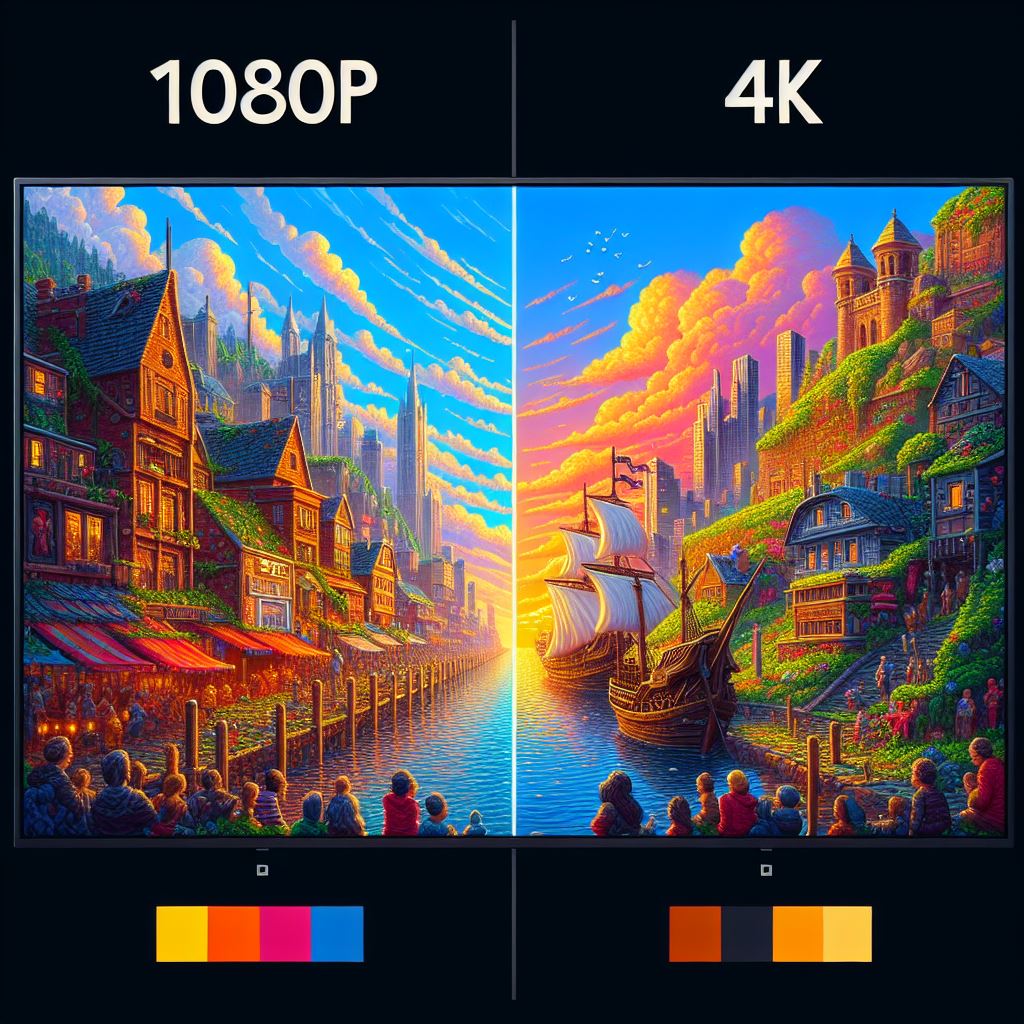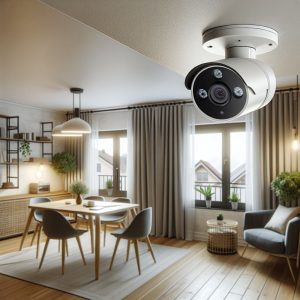Every home should have security cameras to bolster the security and safety of its residents. It’s one of the best ways to deter crimes such as robbery and package theft. These cameras can also help monitor vulnerable areas in your property.
There are two popular choices for security cameras based on their resolution — 1080p and 4K. Let’s compare 1080p vs 4K security camera and determine which is better for your residential or commercial property.
What is 1080p Resolution?
1080p resolution, also known as Full HD, refers to 1920 x 1080 pixels display resolution. The “p” in 1080p stands for “progressive scan,” indicating that all image lines are displayed in sequence, resulting in smooth and fluid motion. This resolution is widely used in televisions, computer monitors, gaming laptops, and smartphones, offering high visual clarity and detail.
A 1080p image contains more than 2 million pixels, resulting in high detail and sharpness. The abundance of pixels ensures that images and videos displayed on a 1080p screen appear vibrant, lifelike, and visually immersive. The higher the resolution, the sharper the picture will be, and 1080p resolution significantly improves image quality compared to lower resolutions.
1080p CCTV provide clear video footage, which is usually sufficient for identifying faces and minor details. These cameras perform well in various lighting conditions and are generally more affordable than their higher-resolution counterparts. Given their popularity, a vast selection of 1080p cameras is available, catering to different budgets and requirements.
What is 4k Resolution?
4K resolution is a generic term referring to a horizontal pixel count of approximately 4,000 pixels.
We say approximately because there are several different 4K resolutions which are currently common. In television and consumer media, 4K UHD (3840 x 2160 pixels or 3840 x 2400 pixels) is the dominant 4K standard, whereas the digital cinema industry uses the DCI 4K or native 4K standard (4096 × 2160 pixels).
In a projection context 4K UHD typically refers to the use of pixel-shift technology, while native 4K refers to a situation where 4K pixels are available without the use of pixel-shift.
The key benefit of 4K resolution is its capability to display clear, realistic, and detailed visuals. Nonetheless, the best 4K experiences require considerations beyond pixels – from source to output.
Security cameras with 4K resolution capture more detailed images, making it easier to discern fine details such as license plates or facial features from a distance. These cameras excel in various environments, delivering clearer and sharper footage. However, the higher resolution demands more storage space and bandwidth, which are considerations for those planning to upgrade their security system.
Knowing the difference between 1080p security camera vs 4k can help you decide your budget and the features you would like for your security camera. Now, let’s compare between 1080p and 4k.
Detailed Comparison of 1080p and 4K Security Cameras
Let’s look on how they stack against one another by starting with 1080p Resolution. Here are the features:
- Resolution – 1920 x 1080 pixels
- Image Clarity – Good for basic surveillance needs
- Storage Requirements – Moderate, manageable for most users
- Bandwidth Usage – Lower, suitable for standard Internet connections
- Cost – Generally more affordable
- Compatibility – Widely compatible with existing systems
- Application – Suitable for general home and office surveillance
While for 4k Resolution:
- Resolution – 3840 x 2160 pixels
- Image Clarity – Excellent for detailed surveillance and identification
- Storage Requirements – High, requires more storage capacity
- Bandwidth Usage – Higher, needs robust network infrastructure
- Cost – More expensive due to advanced technology
- Compatibility – May require newer hardware and software
- Application – Ideal for areas needing detailed monitoring
Conclusion
Choosing between 1080P and 4K CCTV depends on your needs. 4K cameras offer four times the resolution, providing sharper images, crucial for identifying faces or license plates. However, 4K requires a substantially larger storage capacity and higher upfront costs. Installation may require upgrading your network for high-quality streaming. Conversely, 1080P cameras use less storage and bandwidth while still delivering decent image quality. For night vision, 4K excels with advanced infrared technology for better detail. If you’re considering future-proof security, 4K is the way to go. When comparing 1080P to 4K CCTV, you’ll immediately notice a significant difference in image clarity and detail. With 4K, you get four times the resolution of 1080P, providing sharper, more detailed images. This distinction can be vital when trying to identify faces or read license plates from a distance. Imagine the freedom of knowing you can rely on your surveillance system to capture the smallest details, making your space safer and more secure.
While 1080P CCTV, is still effective, lacks the precision that 4K delivers. In a 1080P system, images can appear somewhat grainy or blurred, especially when zooming in on critical areas. With 4K, those concerns vanish, giving you the freedom to scrutinize every corner of the footage without losing quality. This can be particularly advantageous in high-traffic or large areas where every detail matters.
Looking for top-notch security solutions or a 4k & 1080p CCTV in New Zealand? Look no further than Garrison Alarms! With over 35 years of experience, Garrison Alarms offers cutting-edge home and business security systems, including CCTV, burglar alarms, and access control systems. Their expert team provides personalized installation and monitoring services to ensure your property is always protected. Trust Garrison Alarms for reliable, state-of-the-art security solutions tailored to your unique needs. Visit their website today to learn more and get a free quote!





